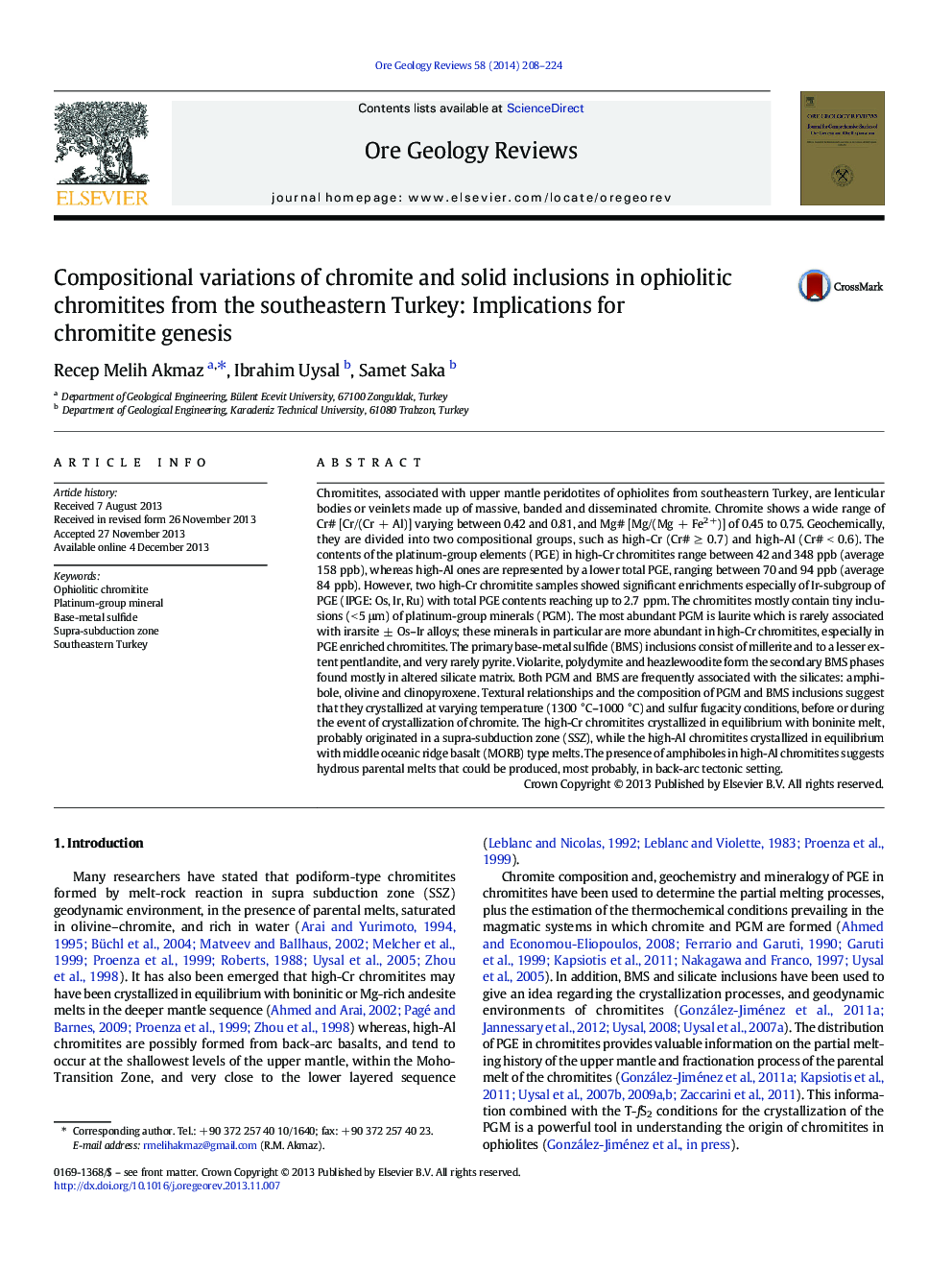| کد مقاله | کد نشریه | سال انتشار | مقاله انگلیسی | نسخه تمام متن |
|---|---|---|---|---|
| 6435923 | 1637245 | 2014 | 17 صفحه PDF | دانلود رایگان |
Chromitites, associated with upper mantle peridotites of ophiolites from southeastern Turkey, are lenticular bodies or veinlets made up of massive, banded and disseminated chromite. Chromite shows a wide range of Cr# [Cr/(Cr + Al)] varying between 0.42 and 0.81, and Mg# [Mg/(Mg + Fe2 +)] of 0.45 to 0.75. Geochemically, they are divided into two compositional groups, such as high-Cr (Cr# â¥Â 0.7) and high-Al (Cr# < 0.6). The contents of the platinum-group elements (PGE) in high-Cr chromitites range between 42 and 348 ppb (average 158 ppb), whereas high-Al ones are represented by a lower total PGE, ranging between 70 and 94 ppb (average 84 ppb). However, two high-Cr chromitite samples showed significant enrichments especially of Ir-subgroup of PGE (IPGE: Os, Ir, Ru) with total PGE contents reaching up to 2.7 ppm. The chromitites mostly contain tiny inclusions (< 5 μm) of platinum-group minerals (PGM). The most abundant PGM is laurite which is rarely associated with irarsite ± Os-Ir alloys; these minerals in particular are more abundant in high-Cr chromitites, especially in PGE enriched chromitites. The primary base-metal sulfide (BMS) inclusions consist of millerite and to a lesser extent pentlandite, and very rarely pyrite. Violarite, polydymite and heazlewoodite form the secondary BMS phases found mostly in altered silicate matrix. Both PGM and BMS are frequently associated with the silicates: amphibole, olivine and clinopyroxene. Textural relationships and the composition of PGM and BMS inclusions suggest that they crystallized at varying temperature (1300 °C-1000 °C) and sulfur fugacity conditions, before or during the event of crystallization of chromite. The high-Cr chromitites crystallized in equilibrium with boninite melt, probably originated in a supra-subduction zone (SSZ), while the high-Al chromitites crystallized in equilibrium with middle oceanic ridge basalt (MORB) type melts. The presence of amphiboles in high-Al chromitites suggests hydrous parental melts that could be produced, most probably, in back-arc tectonic setting.
Journal: Ore Geology Reviews - Volume 58, April 2014, Pages 208-224
